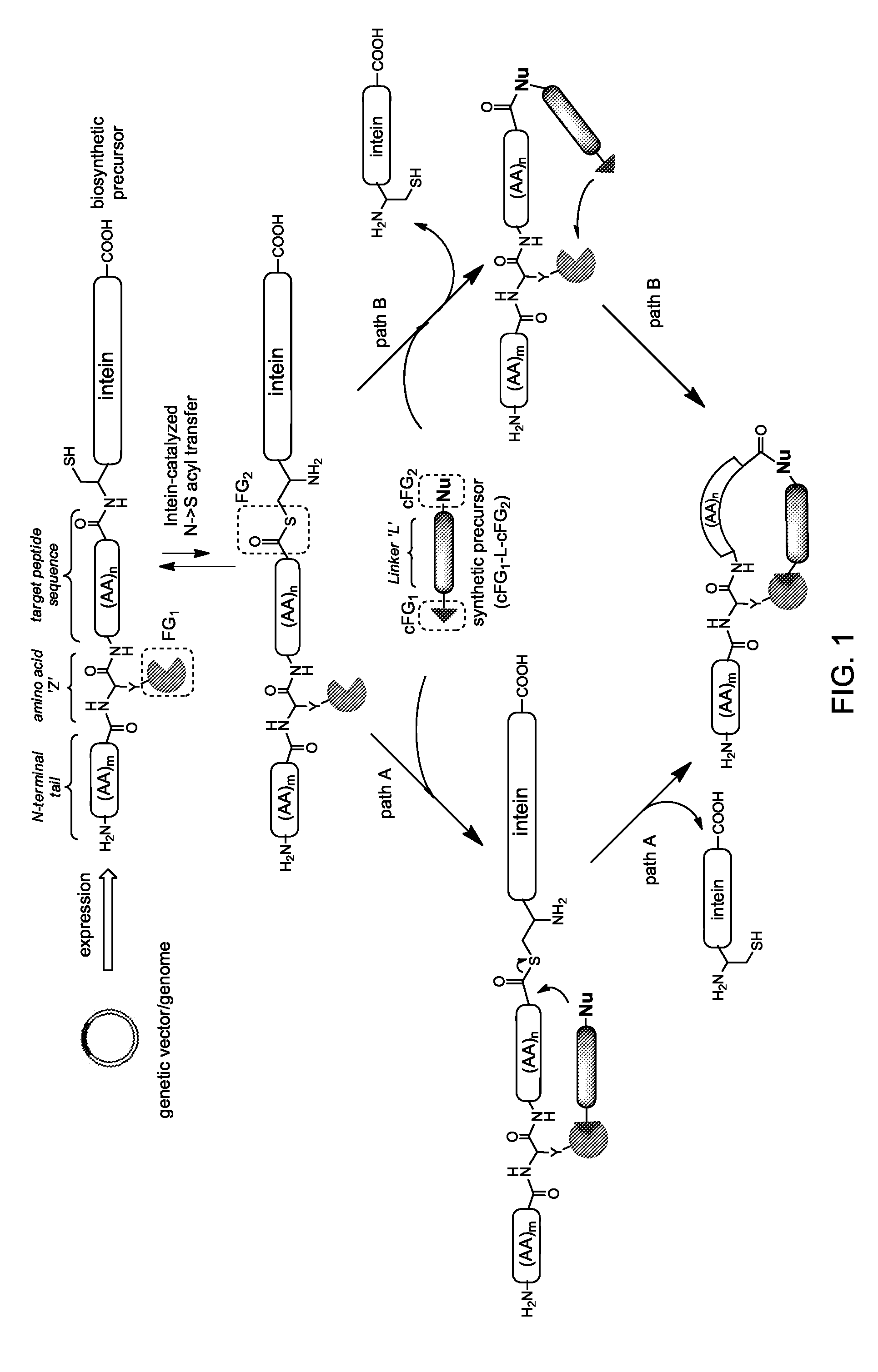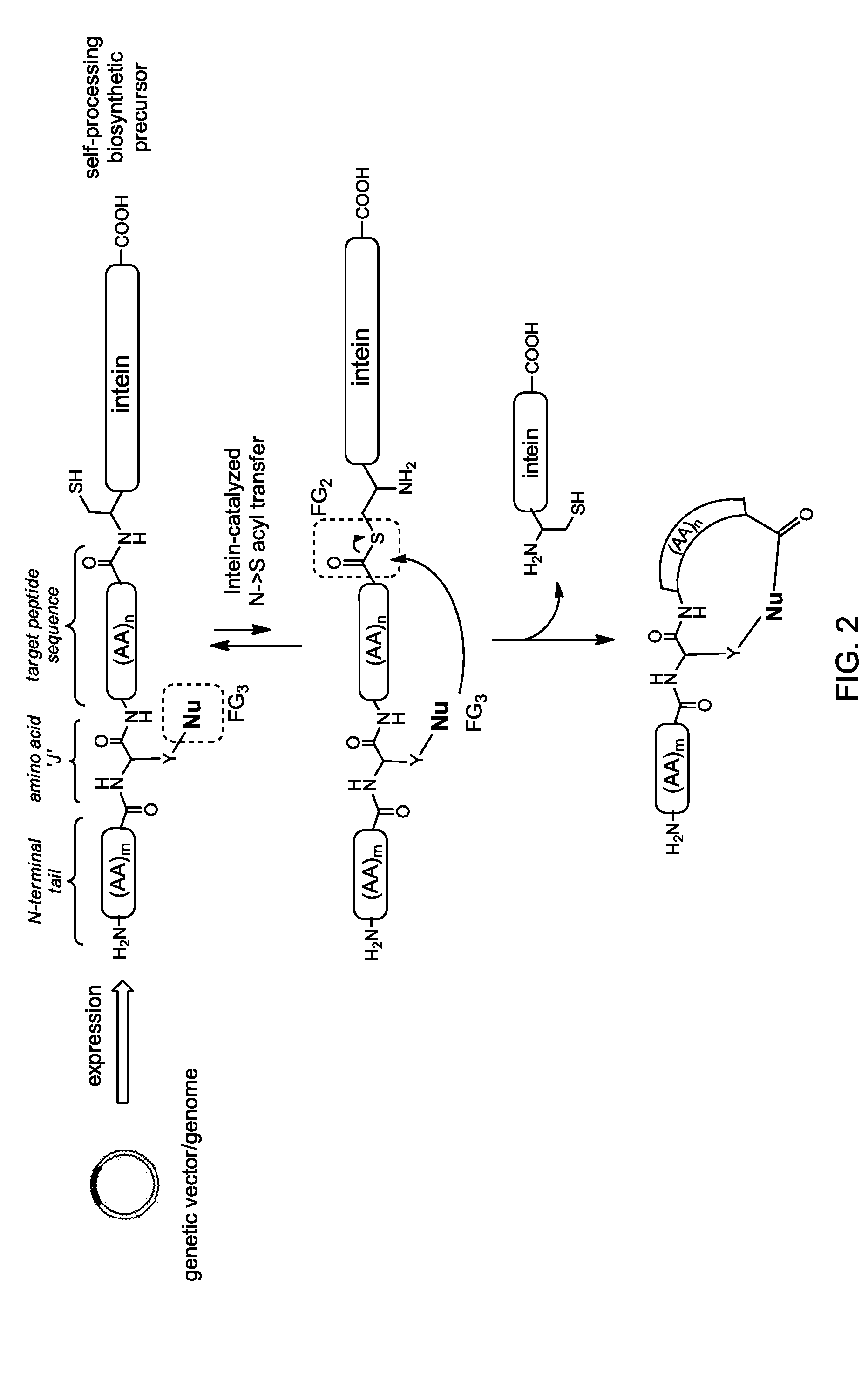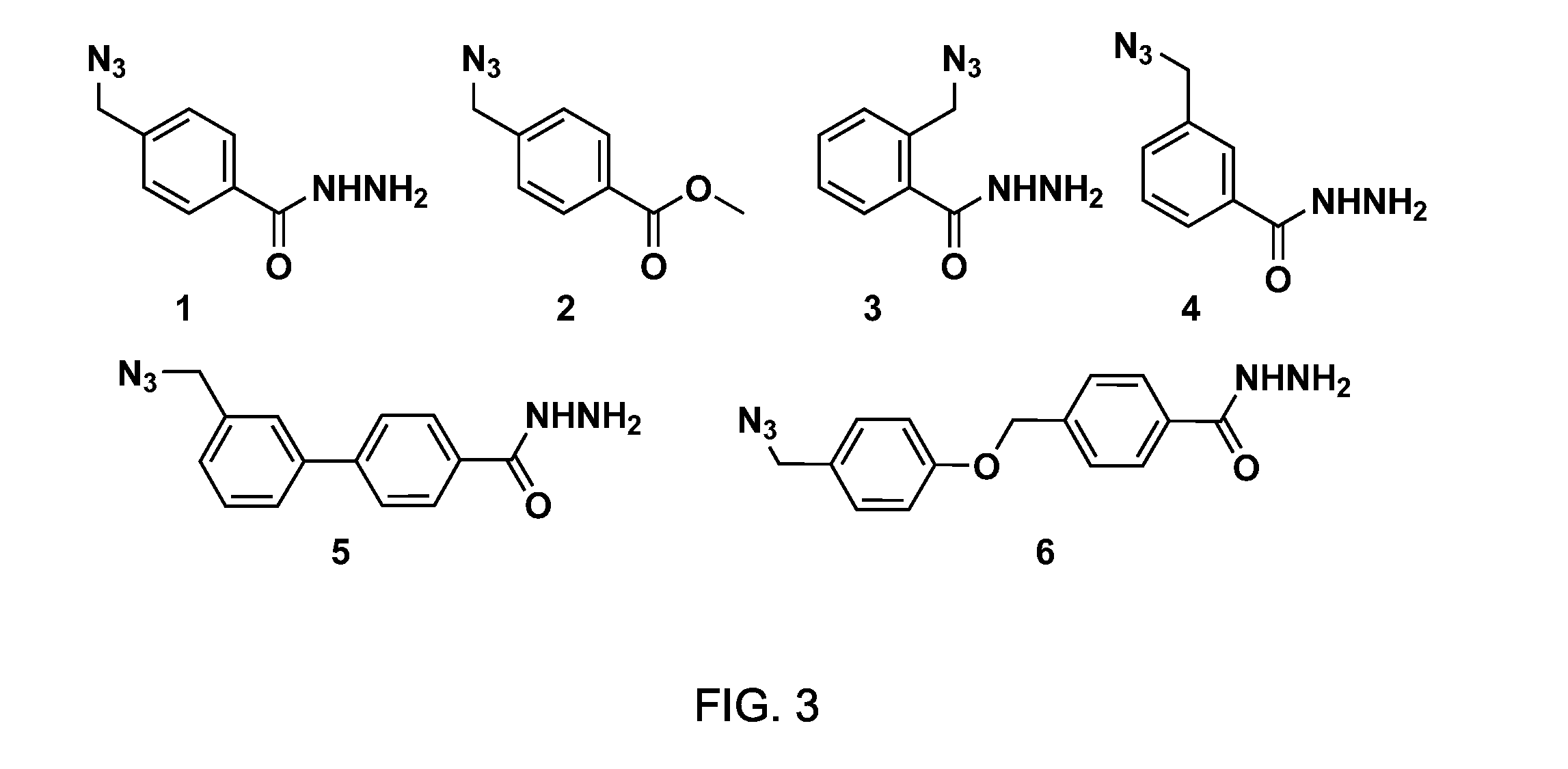Macrocyclic compounds with a hybrid peptidic/non-peptidic backbone and methods for their preparation
a technology of macrocyclic compounds and backbones, applied in the field of macrocyclic compounds with hybrid peptidic/non-peptidic backbones, can solve the problems of limiting the structural and functional diversity of these libraries, and limiting the number of molecules that can be prepared and screened in a productive, laborious process
- Summary
- Abstract
- Description
- Claims
- Application Information
AI Technical Summary
Benefits of technology
Problems solved by technology
Method used
Image
Examples
example 1
6.1 Example 1
Construction and Preparation of Biosynthetic Precursors for MOrPH Synthesis Via Huisgen 1,3-Dipolar Cycloaddition / Hydrazide-Induced Splicing
[0265]This example demonstrates the construction, production, and isolation of biosynthetic precursors suitable for the preparation of macrocyclic peptide-containing molecules according to a variation of the general method depicted in FIG. 1.
[0266]A series of biosynthetic precursors (Table 1) were prepared by constructing plasmids encoding for polypeptide constructs of the type H2N-(AA)m-OpgY-(AA)n-GyrA-LEHHHHHH, where a target sequence (AA)n of variable length (i.e., n from 4 to 12) and composition is framed between the unnatural amino acid O-propargyltyrosine (OpgY), which carries a functional group FG1 in the form of a terminal alkyne, and the intein GyrA from Mycobacterium xenopi (Mxe GyrA). In the various constructs, the N-terminal tail was designed to correspond to a dipeptide (e.g., Met-Gly, Met-Lys), a pentapeptide (e.g., Me...
example 2
6.2 Example 2
Synthesis of Synthetic Precursors for MOrPH Synthesis Via Huisgen 1,3-Dipolar Cycloaddition / Hydrazide-Induced Splicing
[0271]This example demonstrates the preparation of various bifunctional (azide / hydrazide) synthetic precursors suitable for the preparation of macrocyclic peptide-containing molecules according to a variation of the general method depicted in FIG. 1.
[0272]A first synthetic precursor, 1, was designed to contain an alkyl azide as cFG1 and a hydrazido group (—CONHNH2) as cFG2 connected through a phenyl ring (as L group). This compound was synthesized by the route in Scheme 2 (FIG. 23a). To further demonstrate the possibility of diversifying MOrPH structure by varying the nature of the synthetic precursor, synthetic precursors 3, 4, 5, and 6 (Schemes 2-5, FIGS. 23a-b) were also synthesized which are based on phenyl, biphenyl, and diphenyl scaffolds. Bi- and di-aryl structures are, among others, recurring motifs (‘privileged structures’) in small molecules wi...
example 3
6.3 Example 3
Synthesis of Macrocyclic Peptide-Containing Molecules Via Huisgen 1,3-Dipolar Cycloaddition / Hydrazide-Induced Splicing
[0278]This example demonstrates how the general synthetic strategy schematically illustrated in FIG. 1 can be applied for the preparation of macrocyclic organo-peptidic hybrids. In particular, this example illustrates an embodiment of the general method of FIG. 1 where the macrocylization is carried out via a tandem Huisgen 1,3-dipolar cycloaddition / hydrazide-induced splicing reaction (FIG. 4). This example also demonstrates how macrocyclic organo-peptidic hybrids comprising peptidic moieties of varying composition and size can be prepared using this method.
[0279]An initial macrocylization reaction was carried out using synthetic precursor 1 (FIG. 3) and biosynthetic precursor MG6 (Table 1). To a buffer solution (KPi, pH 7.5) containing compound 1 and MG6, Cu(I) was added (via in situ reduction of CuSO4 with sodium ascorbate) to enable a chemoselective a...
PUM
| Property | Measurement | Unit |
|---|---|---|
| polypeptide of structure | aaaaa | aaaaa |
| time | aaaaa | aaaaa |
| structure | aaaaa | aaaaa |
Abstract
Description
Claims
Application Information
 Login to View More
Login to View More - R&D
- Intellectual Property
- Life Sciences
- Materials
- Tech Scout
- Unparalleled Data Quality
- Higher Quality Content
- 60% Fewer Hallucinations
Browse by: Latest US Patents, China's latest patents, Technical Efficacy Thesaurus, Application Domain, Technology Topic, Popular Technical Reports.
© 2025 PatSnap. All rights reserved.Legal|Privacy policy|Modern Slavery Act Transparency Statement|Sitemap|About US| Contact US: help@patsnap.com



